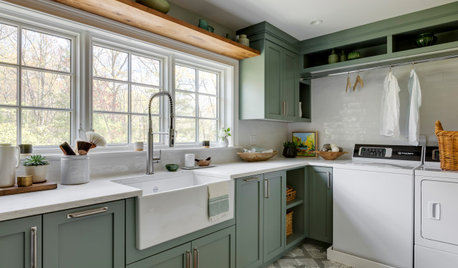Sick Ping
nycti
16 years ago
Related Stories

HOUSEKEEPINGCan-Do Cleaning Strategies for Busy People
While you dream of having a maid (to go with the cook and chauffer), this simplified cleaning routine can keep your real-world home tidy
Full Story
BATHROOM DESIGNSweet Retreats: The Latest Looks for the Bath
You asked for it; you got it: Here’s how designers are incorporating the latest looks into smaller master-bath designs
Full Story
LAUNDRY ROOMSKey Measurements for a Dream Laundry Room
Get the layout dimensions that will help you wash and fold — and maybe do much more — comfortably and efficiently
Full Story
MAN SPACESWhy Men Really Do Need a Cave
Don't dismiss cars, bars and the kegerator — a man space of some kind is important for emotional well-being at home
Full Story
LIFEHow to Make Your House a Haven Without Changing a Thing
Hung up on 'perfect' aesthetics? You may be missing out on what gives a home real meaning
Full Story
MODERN HOMESHouzz Tour: ’50s Ranch Redo Could Be a Keeper
An experienced house flipper puts his creative talents to work on an L.A. remodel designed for his own family
Full StorySponsored






icenine
don555
Related Professionals
Beachwood Landscape Architects & Landscape Designers · Canton Landscape Contractors · Stoughton Landscape Contractors · Beverly Hills Landscape Contractors · Canton Landscape Contractors · Cliffside Park Landscape Contractors · Gallatin Landscape Contractors · Lynwood Landscape Contractors · Mesa Landscape Contractors · The Villages Landscape Contractors · The Woodlands Landscape Contractors · Westchester Landscape Contractors · Maplewood Landscape Contractors · Malden Swimming Pool Builders · South Riding Swimming Pool Buildersdon555
petiolaris
nyctiOriginal Author
petiolaris
nyctiOriginal Author
petiolaris
nyctiOriginal Author
petiolaris
nyctiOriginal Author
petiolaris
nyctiOriginal Author
petiolaris
la_countessa
nyctiOriginal Author
la_countessa
petiolaris